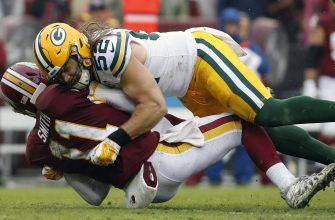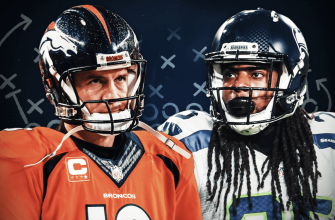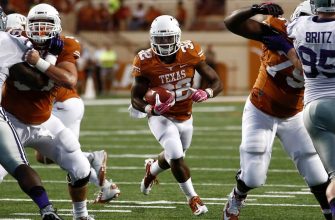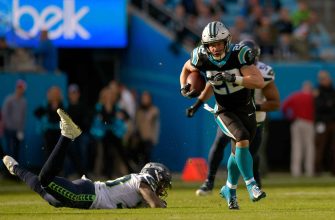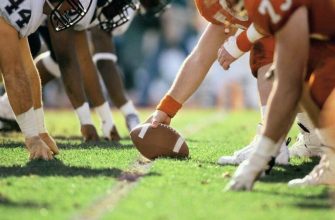A snake draft is the most common draft format used in fantasy football leagues. It got its name because the draft order snakes back and forth from round to round.
In a snake draft, owners take turns drafting players round-by-round. The draft order is determined beforehand, usually randomly. In the first round, the owner with the 1st pick will select first, then the owner with the 2nd pick, and so on until the last pick of the round.
For the second round, the draft order reverses. So the owner with the last pick in the first round now gets the first pick in the second round. The draft continues snaking back and forth, reversing order each round.
This format allows all owners to have both high and low draft picks. The owner with the first overall pick will also have the last pick in odd-numbered rounds. Meanwhile, the owner with the last first-round pick will get the first selection in even-numbered rounds.
Snake drafts are by far the most popular draft format used in fantasy football. The snake format is seen as the fairest way to allow each owner to build a competitive roster. It reduces the advantage of getting the first pick and evens out the playing field. Almost all casual leagues and the majority of money leagues use the snake draft format.
Snake Draft Order
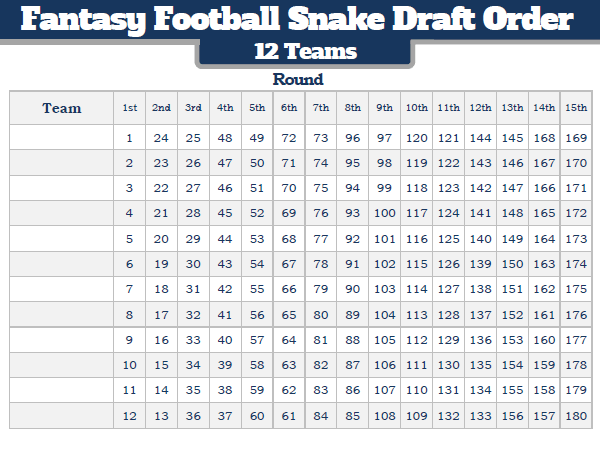
The order in which teams make their picks in a snake draft follows a zig-zag pattern. The draft order is typically determined randomly before the draft begins.
In the first round, the draft order is set from the first pick to the last pick. For example, in a 10-team league the draft order for the first round would be picks 1 through 10.
Then in the second round, the order reverses. So if the draft order in the first round was Team A, Team B, Team C, etc., the order flips in the second round to Team J, Team I, Team H, etc. This creates a snaking or zig-zag pattern as the draft order alternates each round.
The order continues to reverse each round so that the team who picked last in round 1, picks first in round 2. And the team who picked first in round 1, picks last in round 2. This gives each team a mix of early and late draft picks.
The snake draft order is designed to help balance out teams’ rosters and make the draft fair for all participants regardless of draft position. No team gets the top pick in every round or is stuck always picking last.
Strategies
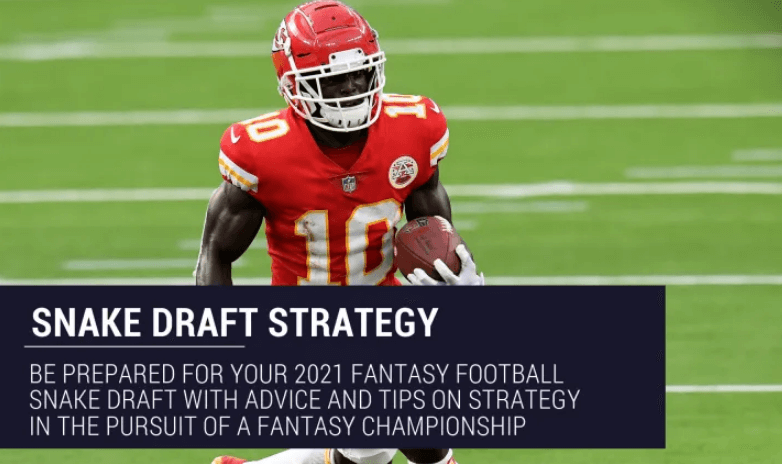
When participating in a snake draft, managers will want to employ certain strategies to build the best possible fantasy football team.
Here are some key drafting strategies to consider:
Positional Strategies
- Running Back (RB) – Many experts recommend targeting RBs in the early rounds since the drop off in production from elite to average RBs is steep. Load up on at least 2 stud RBs in the first 3 rounds.
- Wide Receiver (WR) – The WR position is very deep so don’t reach too high for WRs early. Consider WR in rounds 4-7 when you can get high upside players with proven production.
- Quarterback (QB) – Wait on drafting QBs since you can find productive starters in later rounds. Unless you can get an elite QB, focus on RBs and WRs first.
Value-Based vs Needs-Based
- Value-Based – Draft the player available that represents the best value with each pick, regardless of position. This approach aims to acquire the best possible players.
- Needs-Based – Draft to fill roster needs by position. This approach ensures you get starters at each position but possibly reaches on lower value players.
Mixing both strategies is common to build a well-rounded roster. Be flexible based on how the draft unfolds.
Pros
A snake draft allows all fantasy football managers to have equal access to top players. In a snake draft, the draft order reverses each round, so the manager who picks last in the first round will pick first in the second round. This helps balance out the draft and prevents any single manager from acquiring all the top players.
The reversing draft order adds an extra layer of strategy to snake drafts. Managers need to plan ahead and think about which positions they want to target in later rounds. For example, if you pick an elite WR in the first round, you may want to grab RBs in the next few rounds before the draft order flips.
Snake drafts require creativity and foresight to build a well-rounded team. You can’t just stockpile the top projected players. You need to anticipate position runs and find value in the mid-to-late rounds. The strategy involved makes snake drafts exciting and challenging.
Cons
Snake drafts have some potential downsides to be aware of:
- Can force reaches if drafting for need. In a snake draft, you only get one pick at a time as the draft order snakes back and forth. If you have a specific need you want to fill on your roster, you may end up reaching and drafting that player higher than their ADP (average draft position) because you’re worried they won’t make it back around to your next pick. This can lead to skipping on more talented players in favor of filling a need.
- Less flexibility than auction drafts. With snake drafts, you’re confined to drafting in a set order and only getting the players that fall to you. Auction drafts allow you to nominate and bid on any player, giving you more flexibility in crafting your ideal roster. Snake drafts lock you into the luck of the draft order.
Snake Draft Rounds
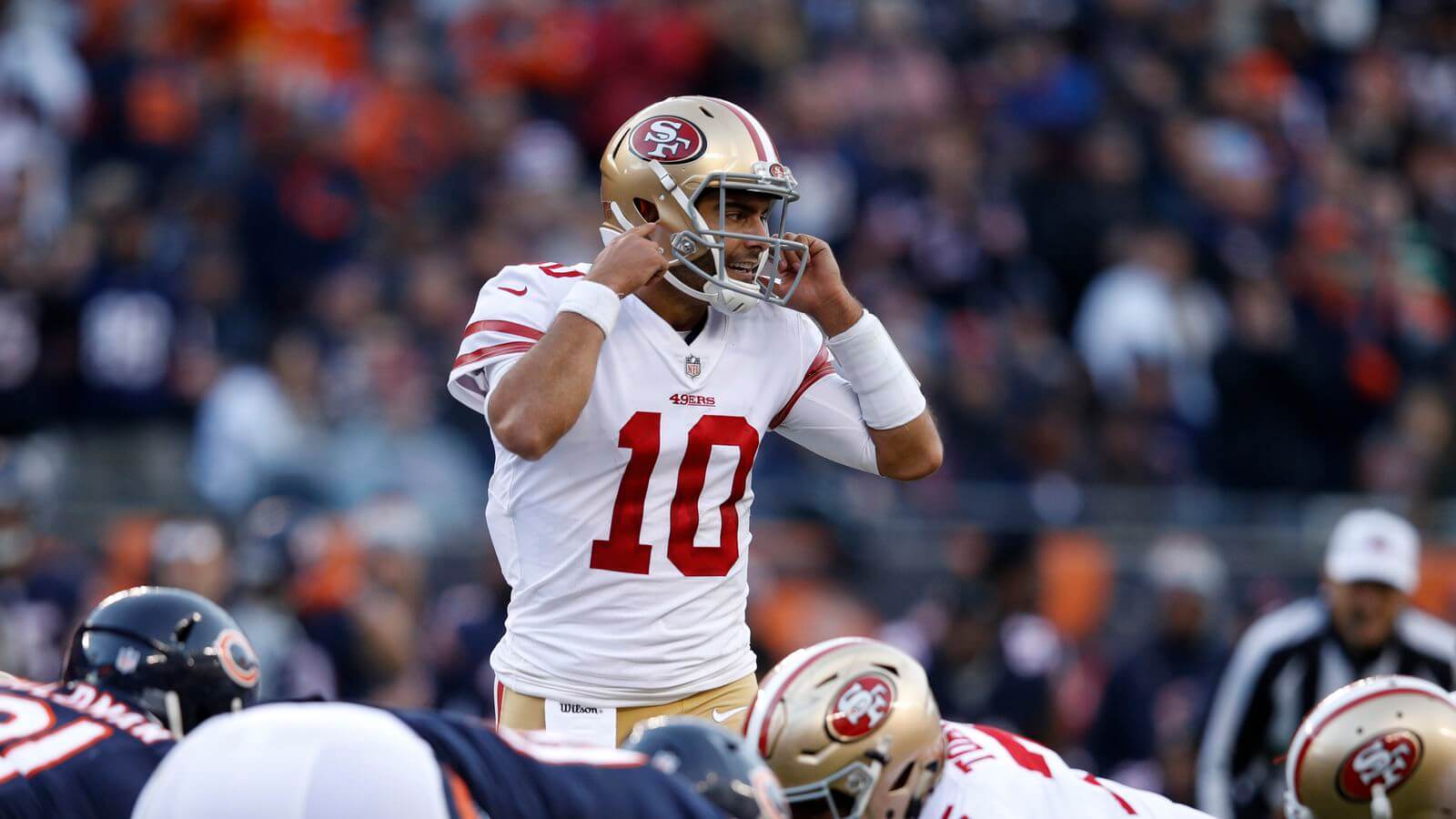
Most fantasy football snake drafts consist of 12-14 rounds. The strategy you employ can vary based on the round. Here are some tips for each round:
Rounds 1-2
These early rounds are for picking sure-fire studs. Target elite players like running backs expected to be workhorses, top-tier quarterbacks, and wide receivers likely to see a high volume of targets. Don’t take too many risks during these rounds.
Rounds 3-7
The middle rounds are a good time to fill out your starting lineup. Consider running backs and receivers that are WR2/RB2 types or have upside to outperform expectations. Still avoid reaching too far for sleepers.
Rounds 8-11
Now is the time to take some fliers on high-ceiling players and grab backups at key positions. Snag your QB2 if you haven’t already. Handcuff running backs to your RB1/RB2 if you want some insurance. Pick wide receivers with upside and target tight ends with potential to break out.
Rounds 12-14
These late rounds are for stashing players with upside and filling out your bench. Take some dart throws on rookies or suspensions coming back later in the season. Grab backups at RB/WR/TE in case your starters get injured. Look for defenses and kickers projected to do well.
Snake Draft Pick Trading
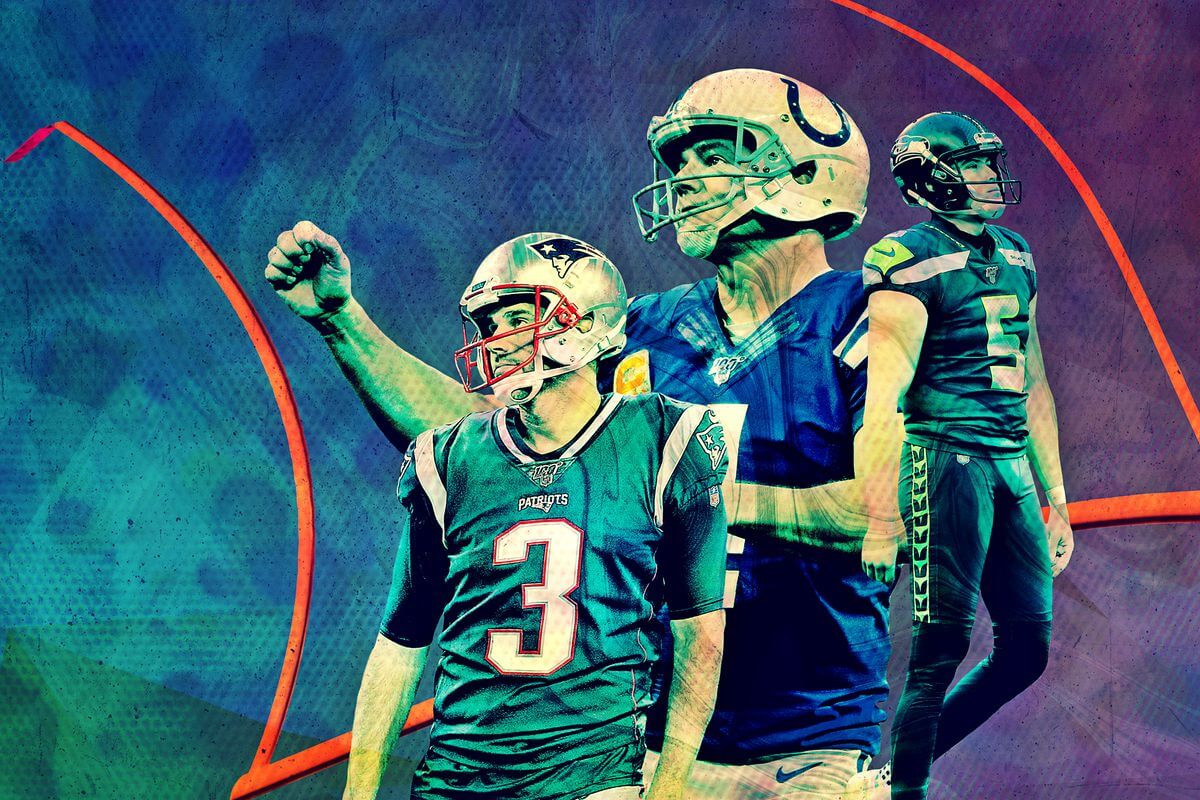
One interesting aspect of snake drafts is the ability to trade draft picks. Unlike a linear draft where the draft order is set, snake drafts introduce the ability for teams to trade their upcoming draft picks.
This changes draft strategy in a few key ways:
- Teams can trade future draft picks to move up or down in the current draft. For example, a team with an early first round pick could trade that pick to a team with a later first round pick to get additional picks in later rounds.
- Trading draft picks allows teams to target specific players. If there’s a player a team really wants, they can trade up to an earlier pick to draft that player.
- Having the option to trade picks creates more unpredictability in the draft. Teams can make surprise trades that throw off other teams’ draft strategies.
- Trading also allows teams to stockpile picks in a certain year if they feel that draft class is stronger.
- Teams may trade future year’s picks to get more picks in the current draft if they feel it’s a stronger player pool.
The ability to trade draft picks adds an extra layer of complexity and flexibility to snake draft strategy. It forces teams to balance drafting good players now versus stockpiling assets for future drafts. While trading does happen more often in dynasty leagues, it can occur in redraft leagues too. The option to trade snake draft picks opens up many possibilities for creative draft strategy.
Mock Drafts
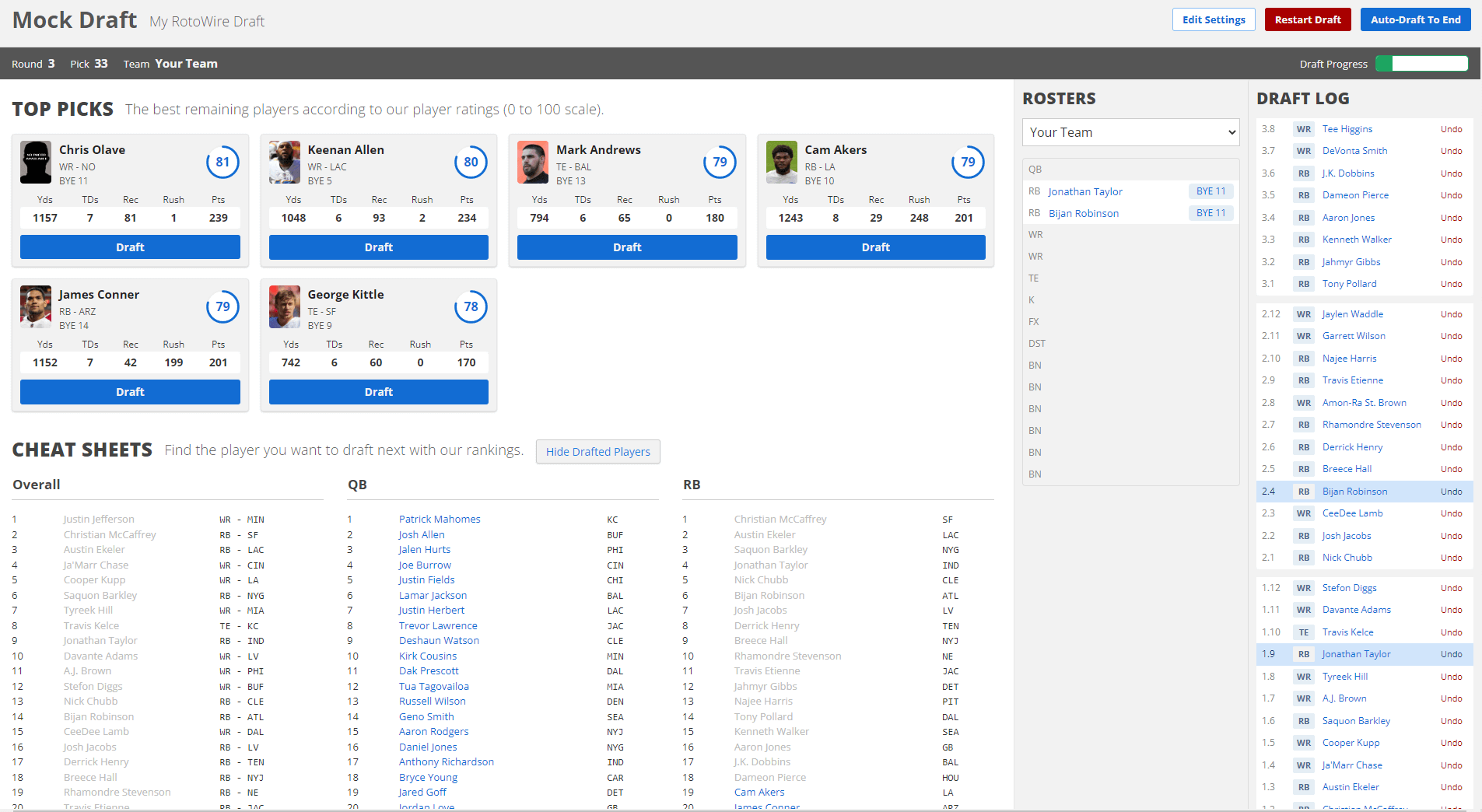
Mock drafts are a key tool for fantasy football players to practice and prepare for their real snake drafts. Doing multiple mock drafts in the weeks leading up to your draft can help you get a feel for draft strategies, player values, and where players tend to get picked.
The main benefit of mock drafts is getting drafting experience. The draft is the most important and exciting part of fantasy football. Being comfortable and confident during your real draft can give you an edge. Mock drafting with different strategies will reveal what works and what doesn’t for your league settings and scoring.
Mock drafts also clue you in on player ADP (average draft position). Knowing the typical draft spots for players can inform your ranking list and help target players falling too far. If you have an early or late pick, mock drafting different positions will show you viable strategies.
The more mock drafts you can do, the better. Treat them like the real thing by drafting from different slots and using your preferred strategies. Make note of what works and what doesn’t for your team construction. This will pay off hugely when your real snake draft arrives.
Snake Draft vs Auction Draft
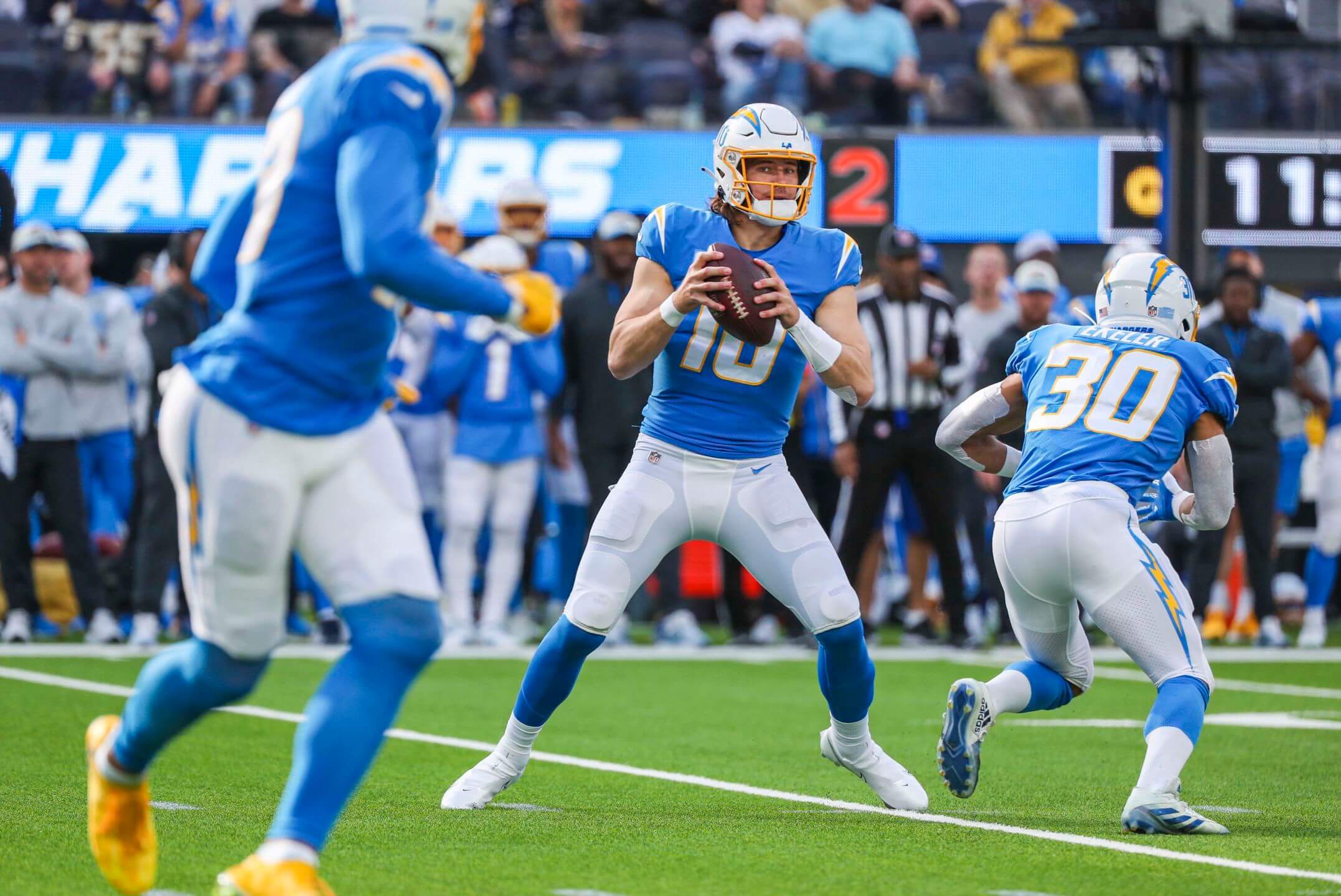
The snake draft and auction draft are the two most common draft formats used in fantasy football leagues.
While both have their merits, there are some key differences between the two:
- Snake draft: In a snake draft, owners take turns selecting players round-by-round in a preset order. The order reverses each round, meaning the last picker in round 1 gets the first pick in round 2, and so on, giving the draft a “snaking” pattern. This format allows for strategy around draft position.
- Auction draft: An auction draft has owners bidding on players using an allotted budget. The nominated player goes to the highest bidder, then another player is nominated. This continues until rosters are filled. The auction format allows every owner a shot at any player but requires budget management skills.
The choice between snake and auction depends on a few factors:
- Strategy vs budgeting: Snake drafts emphasize strategy around draft position, while auctions require budget management skills. Auctions can give more freedom.
- Fairness: Snake drafts can give an advantage to early drafters. Auctions put everyone on equal footing from the start.
- Preparation: Snake drafts reward those who mock draft extensively. Auctions require valuation research so owners don’t overpay.
- Active vs passive owners: Auctions favor active, engaged owners. Snake drafts can accommodate more casual players.
- League preferences: Some leagues prefer the traditions and strategy of snake drafts, while others find auctions more exciting.
In summary, snake drafts are more strategic and structured, while auctions offer flexibility. For casual leagues, snake drafts tend to work better, but auctions can be more exciting among engaged owners. Consider your league’s needs and preferences when choosing a draft format.
Tips and Tricks for Snake Drafts
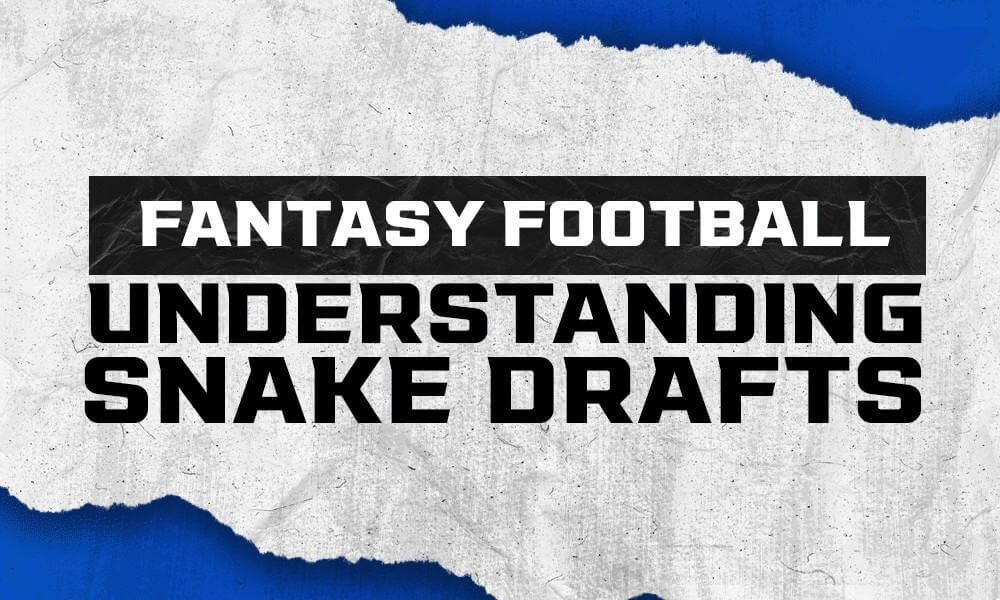
Having rankings ready and being familiar with average draft positions for players is key to drafting effectively in a snake draft. Review rankings from experts but also make your own tiers and rankings based on your own analysis. Knowing which rounds players tend to get drafted will help you plan who to target in each round.
Be aware of bye weeks when drafting. Try not to overload too many players from the same bye week, as it can leave you shorthanded during those game weeks. Spread out your bye weeks over many weeks when possible.
Stay flexible during your draft. Be prepared to adjust your strategy if your targeted players get taken earlier than expected. Don’t lock yourself into one position early – be willing to pivot based on who is available.
Be patient and don’t reach too early for a player just because you want someone at that position. Stick to your tiers and rankings board. There will usually be comparably ranked players still available next round.


